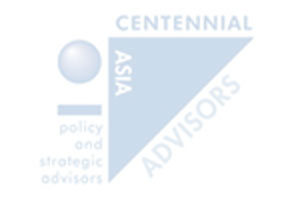Asian Insights
A summary of “Asian Insights” weekly update is published here. The full version is available through paid subscription. Please click here to register your interest. Our executive will get in touch with you.

Key themes in recent developments:
- A new front opens in Asian political risks: Sino-Indian border tensions persist after five rounds of talks. With China perceived by the Indian public as having seized Indian territory, pressure on Indian Prime Minister Modi to counter China will grow but his options are limited. He will seek a face-saving compromise to avoid a near term escalation. But this incident will serve to harden India’s approach to China, which could lead to longer term conflicts. Malaysia appears headed for an early general election as Prime Minister Muhyiddin’s position is increasingly untenable.
- Asian economies: India, Malaysia, Indonesia and the Philippines are reaching new lows in economic activity, confirming that second quarter growth will be exceedingly poor. Although there are some small signs of possible improvement such as the better outlook for Indian agriculture as a result of a relatively good monsoon, these are few and far between.
Why we remain positive about an economic upturn
- While we expect abysmal numbers for Asian growth in 2Q20, we believe that four key factors will work for a relatively good recovery thereafter – the easing of restrictions, the resilience of businesses and consumers, the lagged impact of the most powerful policy response seen in recent times and one-off factors such as the outlook for exports of technology goods.
- The key risk is of new waves of infection. We have assumed that these will happen but our view is also that in most cases, these can be contained, as China and Korea have shown with the secondary waves they have managed. New therapies will also reduce morbidity and mortality rates, making the disease less dangerous.
|
2020 |
Growth (%) |
Inflation (%) |
CA (% of GDP) |
Currency (vs. USD) |
Policy Rate (%) |
| China |
2.2 |
2.3 |
0.8 |
7.1 |
2.75* |
| Hong Kong |
-4.5 |
1.5 |
5.8 |
7.78 |
– |
| India |
0.5 |
3.8 |
-0.6 |
73.5 |
3.60 |
| South Korea |
-0.6 |
0.4 |
4.8 |
1,180 |
0.50 |
| Taiwan |
1.0 |
0.2 |
8.1 |
29.7 |
0.875 |
| Singapore |
-6.1 |
-0.5 |
14.8 |
1.36 |
– |
| Thailand |
-7.5 |
-1.5 |
5.2 |
31.0 |
0.50 |
| Vietnam |
3.0 |
2.2 |
0.7 |
23,120 |
4.50 |
| Indonesia |
1.9 |
2.4 |
-1.6 |
14,500 |
3.50 |
| The Philippines |
0.5 |
2.1 |
-0.8 |
51.0 |
2.50 |
| Malaysia |
-1.8 |
-0.8 |
3.0 |
4.1 |
1.75 |
Respite for Asian currencies may turn out to be fleeting
- In the short term, the trajectory of currencies can be traced to the perception of risk to growth and stability. Over the longer-term, the currency should reflect the macroeconomic fundamentals and potential vulnerabilities, especially in the external economy.
- The currencies in Asia which concern us most according to the metrics we look at would be the Indian Rupee, Indonesian Rupiah and the Malaysian Ringgit.

There are five themes that are shaping the environment for Asian economies:
- Tougher public health restrictions will deepen the economic downturn: Alarming statistics on new infections and overwhelmed healthcare systems have precipitated stringent restrictions to limit the spread of the virus. The resulting sudden halt to economic across the world is most damaging to trade-oriented East and Southeast Asian economies.
- Radical policy support measures implemented globally to mitigate the economic impact: To alleviate the shock to economic activity, massive monetary and fiscal support has been put in place. These will provide succour to vulnerable segments of the population but will not avert a global recession.
- But there are more signs of financial stresses: Despite these policy interventions, indicators of financial stress remain elevated. Emerging market economies will soon come under greater pressure as a result.
- The Chinese economy could deliver an upside surprise: China’s leaders, confident that they have overcome the risks to public health, now seek a swift recovery in the economy. Expect a massive fiscal stimulus in coming days – one which will help produce a strong recovery in the second half.
- Do not under-estimate the political downsides: Political leaders who have mishandled the coronavirus crisis are seeing their popularity eroded. In Indonesia’s case, this could have the broader effect of putting its game-changing labour market reforms at risk.
- Stability concerns lurk despite massive policy effort: Asian governments have announced wide-ranging monetary and fiscal interventions. These
will help cushion the worst effects of the crisis. China, South Korea and Singapore, with stronger state capacity and more policy space have been ahead of the curve, with other countries now trying to catch up after a slow initial response. - We continue to be concerned about potential financial stresses in the region: Malaysia, India and Indonesia are most at risk. Concerns of stability could easily precipitate capital flight that central banks are ill-equipped to staunch, given their paltry reserves. While the testing times permit a dollop of fiscal stimulus to arrest the downward spiral in economic conditions, a narrow tax base will also present fresh concerns for policymakers to shore up their finances once the current crisis abates.
